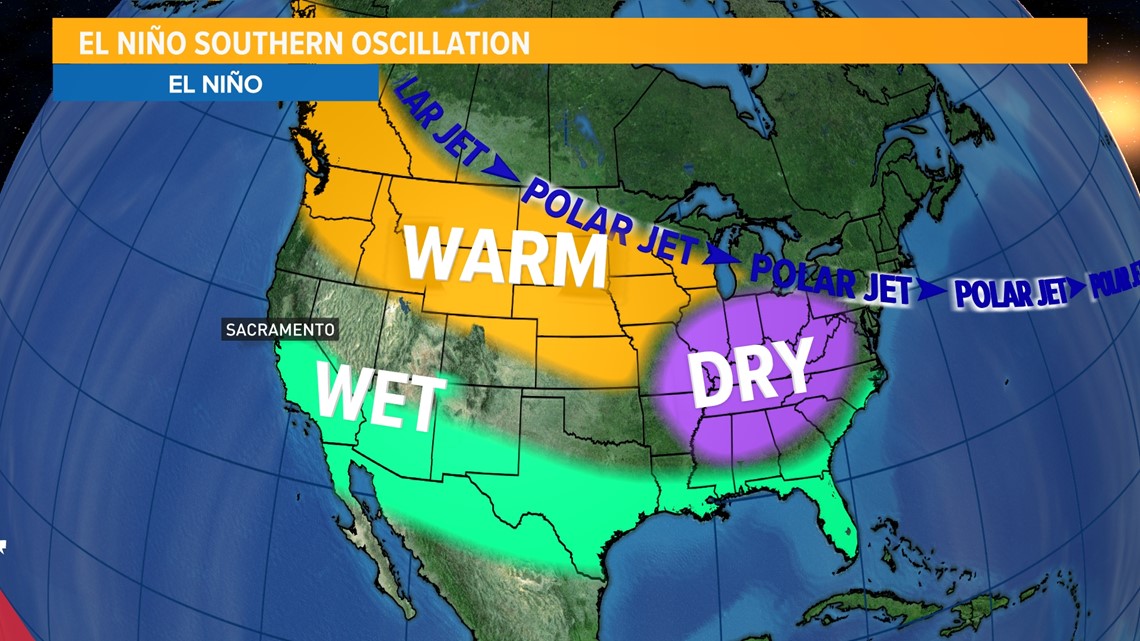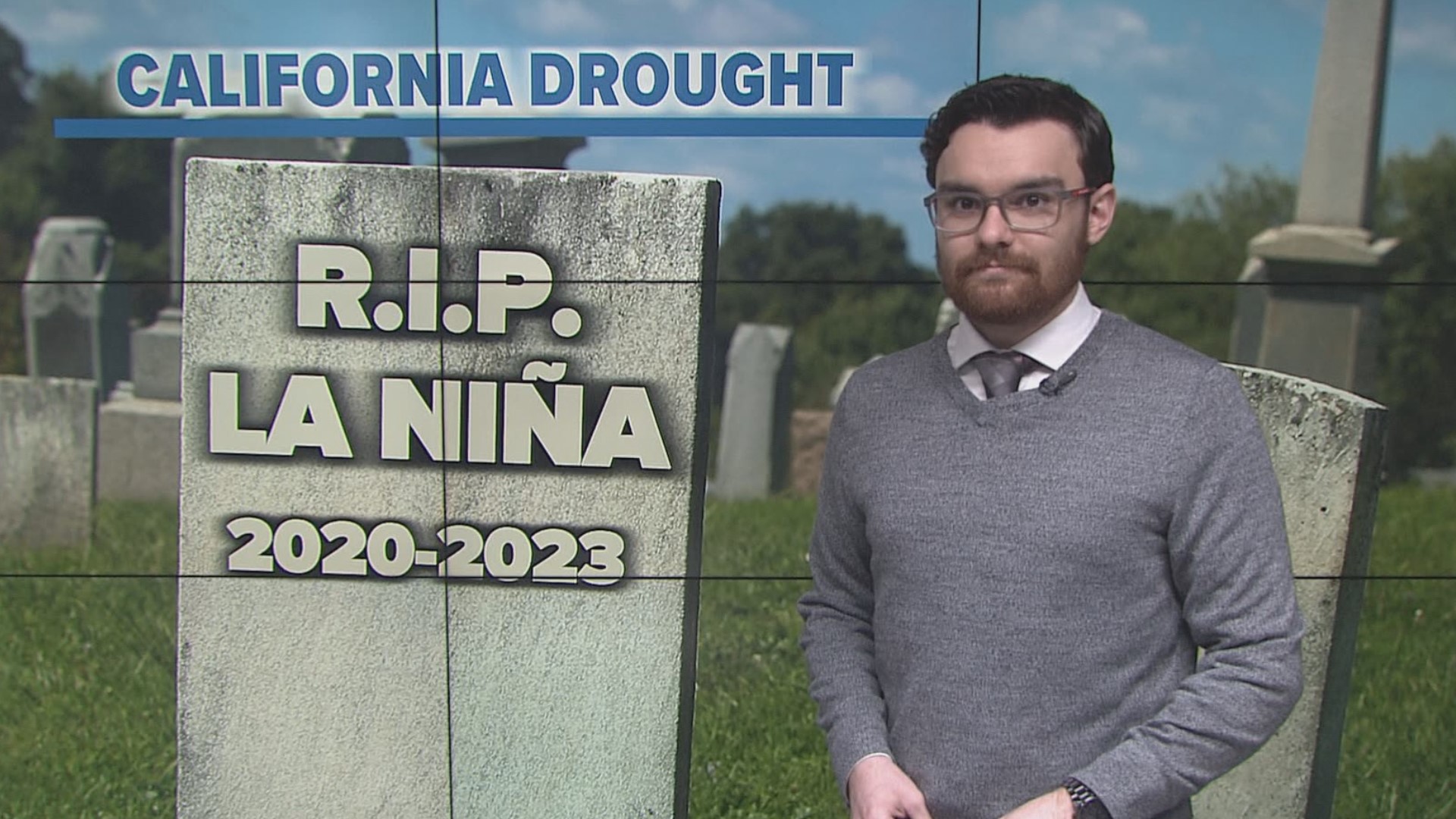SACRAMENTO, Calif. — La Niña is finally over after three years, according to the National Oceanic and Atmospheric Administration.
This winter has not acted like a typical La Niña winter with California getting drenched, especially in Southern California where La Niña typically signals a drier than average winter.
In fact, Southern California has been so wet that the Southern California Water Board halted emergency conservation measures that were put in place last summer.
Climate models are nearly certain El Niño will develop later this summer or fall. California is typically wetter during El Niño conditions, although the signal becomes murkier from Sacramento northward.


Brad Coffey with Metropolitan Water District of Southern California wants to stress that just because the most severe restrictions have been lifted, it’s not a free pass to use water wastefully, especially since conditions along the Colorado River are still dire.
"What we're asking consumers to do now is to continue to use water efficiently, and to conserve where they can and to contact their local agencies who actually control the water restrictions, to see what those would be. From our perspective, we just want people to use water efficiently," said Coffey.
Although California has always been at the mercy of boom or bust precipitation cycles, climate change has been making the wet years more wet and the dry years drier.
"The important thing is by people continuing to use water efficiently, that lets us fill our storage more quickly, and puts us in a better place if next year turns really dry. Because what we've seen is these extremely dry to extremely wet cycles are happening with something we call climate whiplash," said Coffey.
It can be difficult to remember that California can experience extreme flooding just as easily as it can experience severe drought.
California has thousands of miles of levees that protect the valley from flooding when they do their job properly. Situations like the one along the Pajaro River could continue to put the public at risk especially as funding is being eliminated towards programs that promote floodplain restoration and levee protection.
"When the state kind of decides year after year, to divert funds away from such a multi-benefit solution, we think of a couple things. We think first off, it's much more expensive to pay later than to pay now. And so the damages that we're experiencing as a result of this storm event are these series of storm events, and not being prepared, they're much much greater than if we just spent the money to invest on the front end," said Julie Rentner, of River Partners.
The Pajaro situation could've happened almost anywhere in the state, according to Rentner, and she said the state needs to stop acting reactionary in order to prevent such disasters.
"It's going to take prolonged action to not only take optimum advantage of what we're experiencing right now, but also put the pieces in place so that the next time this happens, we're ready to grab even more of that water and help it soak into the ground," said Rentner. "And that's where these investments in the future are really important. Not being reactionary and responding to damages in emergencies, but thinking forward about how we can prevent those emergencies or turn them into great opportunities in the future."
WATCH ALSO:

















